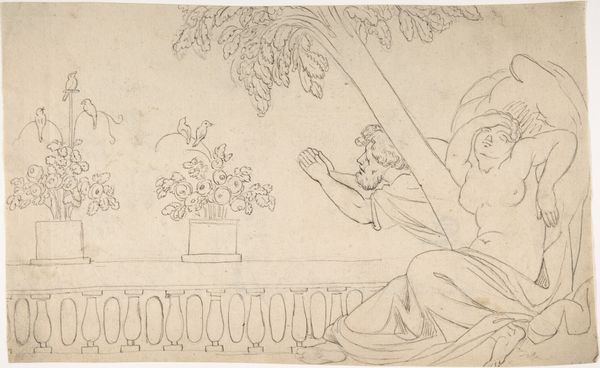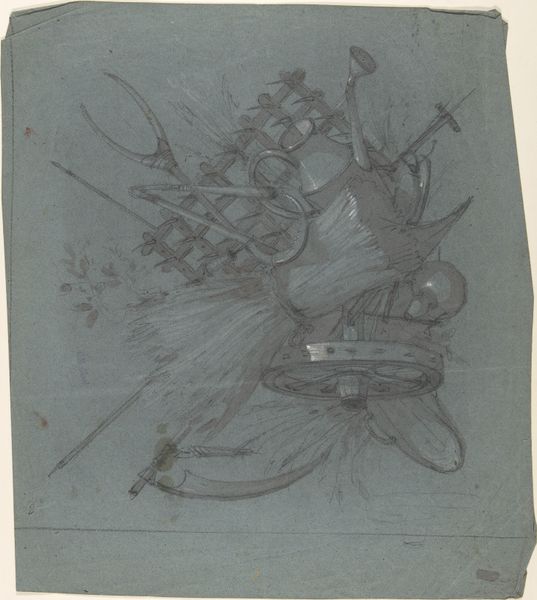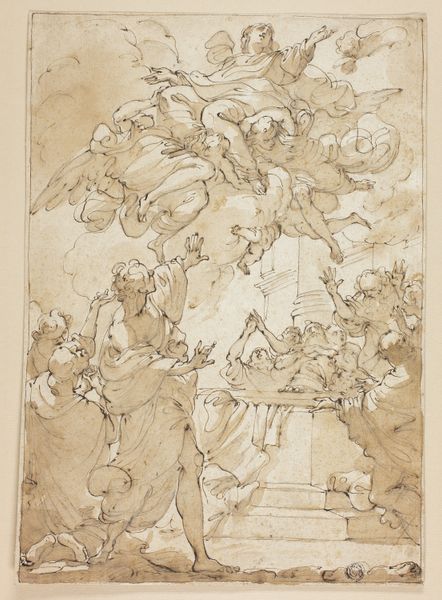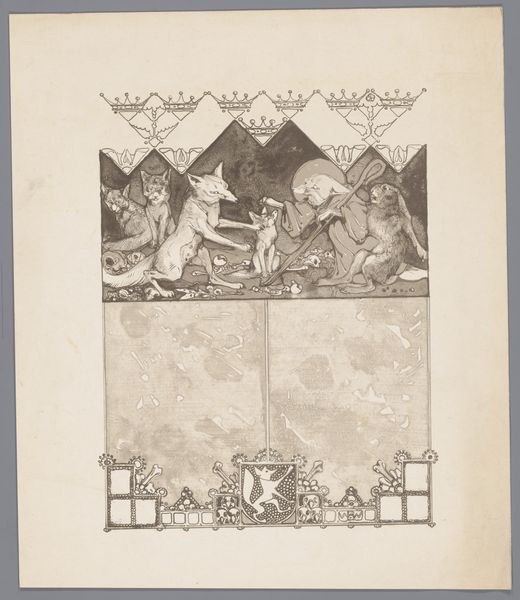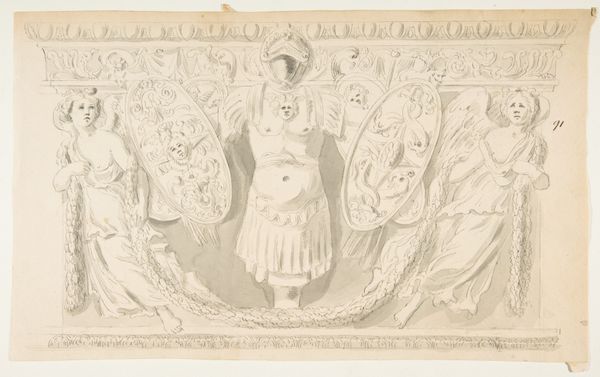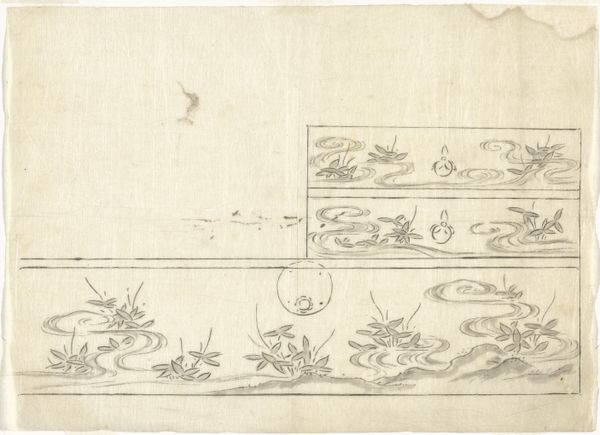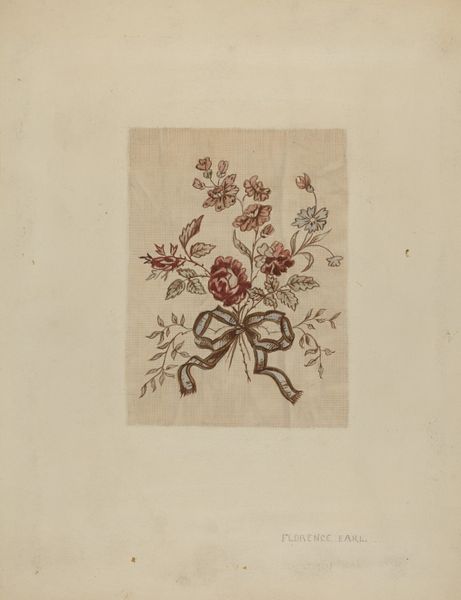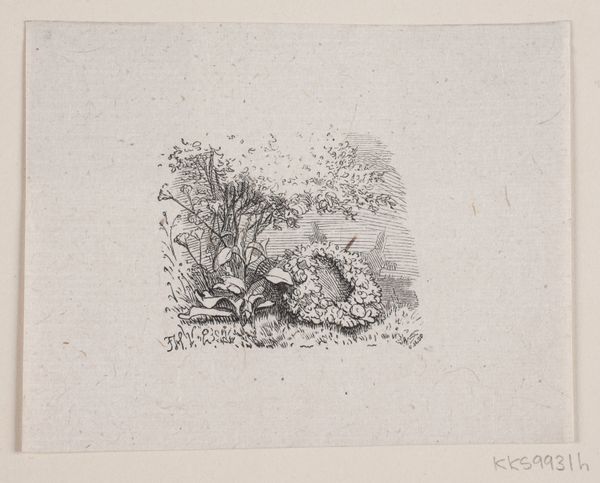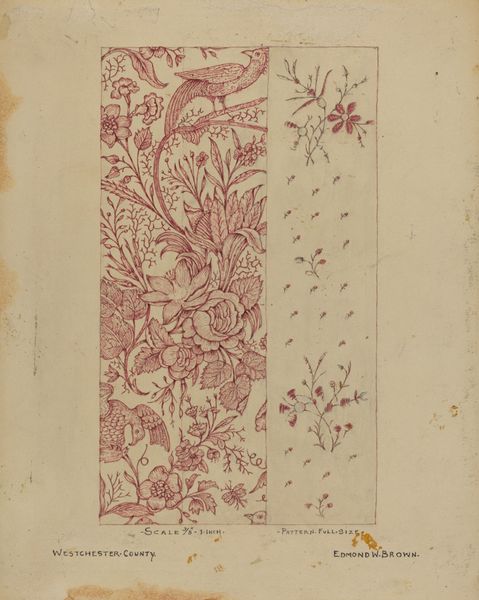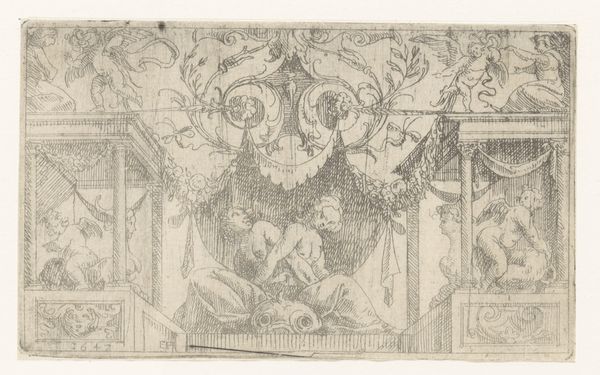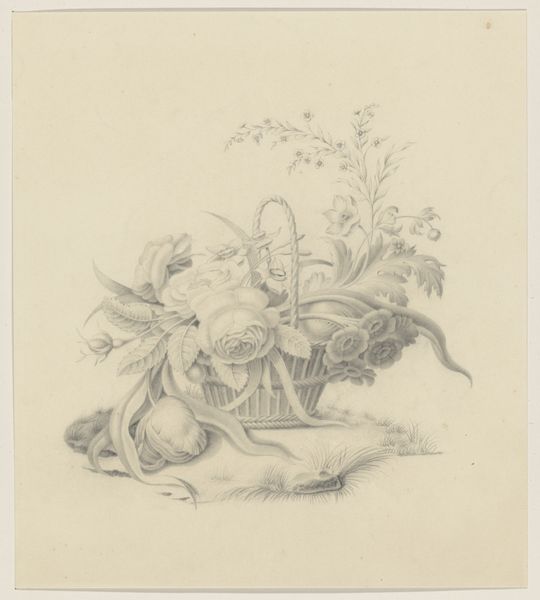
drawing, ink
#
drawing
#
art-nouveau
#
ink drawing
#
pen sketch
#
figuration
#
ink
#
line
Dimensions: image: 16.4 x 18.8 cm (6 7/16 x 7 3/8 in.)
Copyright: National Gallery of Art: CC0 1.0
Curator: This is Karel Vitezslav Masek's "Ornamental Design with Birds and Lily," created around 1900, using ink on paper. Editor: It has such a delicate, almost dreamlike quality. The fine lines give it a gentle, intimate feel. Curator: Absolutely, that's characteristic of the Art Nouveau period. Let’s consider this image within its cultural context: At the turn of the century, we are seeing shifts in design ethos – away from rigid Victorian ornamentation towards fluid, organic forms, reflecting the anxieties around industrialization and yearning for a return to nature. Masek situates his rendering between both sensibilities, however. The ornamental frame sets boundaries of human constraints against free floral rendering that dominates. Editor: You’re right, that contrast is striking. I am struck by how the figure of a child interacts almost voyeuristically through its hands to communicate, almost directly. Its innocence is counterweighted against the rigid lines and frame you point to. It makes me consider contemporary discourse around gender, performativity and innocence of childhood as another ornament under scrutiny. The birds too; is Masek commenting on freedom versus entrapment? Curator: Indeed. There is the push and pull – a longing for simplicity clashing with constructed boundaries, even societal ones. Consider also that many Art Nouveau artists engaged in work that addressed both decoration and activism: It's important to situate this "ornamental design" as potentially carrying deeper political messages around gender or class, even in its beauty. Its positioning to make you feel this tension makes the message all the more timeless. Editor: It definitely feels timely to our current dialogues, questioning conventional aesthetic and moral values of those bygone eras. Thank you for drawing out the nuanced conversation it inspires. Curator: And thank you for lending your contemporary perspective, illuminating those ever-relevant connections to present-day concerns and its ongoing relevance.
Comments
No comments
Be the first to comment and join the conversation on the ultimate creative platform.
